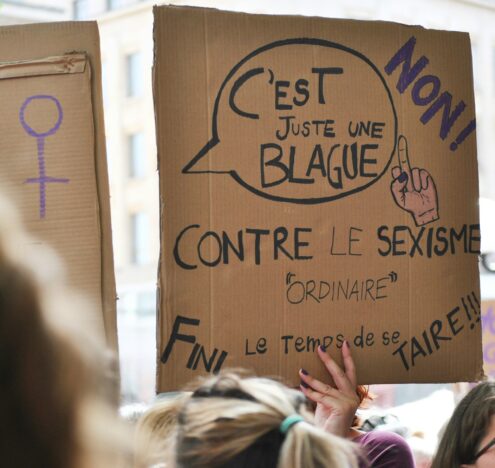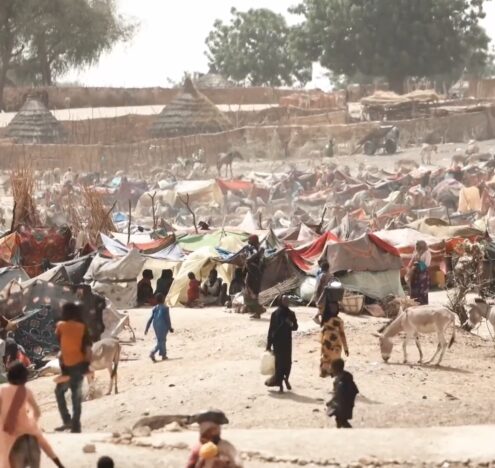One year into Russia’s invasion of Ukraine, the conflict appears to be hardening into a stalemate, with each side experiencing relatively limited territorial gains and losses. Without clear momentum or a path to peace, the war threatens to become a protracted one. While an extended conflict along the lines of World War I or the Iran-Iraq War may be attractive to those who would like to weaken President Vladimir Putin’s Russia, it also has negative implications for Ukraine. Even if Ukraine and its Western supporters outlast Russia, they may achieve no more than a pyrrhic victory, leaving a liberated but empty country unable to rebuild its economy.
Ukraine’s population has been falling since the early 1990s, as deaths have consistently outpaced births, and many people have emigrated in search of better opportunities. For example, Ukraine had 8 births per 1,000 people and 14.5 deaths per 1,000 people in 2020, according to the most recent data from the World Bank. Fertility rates in Ukraine have dipped significantly since 1960. According to statistics compiled by The Economist, Ukraine, including Crimea and the Donbas, lost about 16% of its population between independence and the eve of the 2022 Russian invasion. Ukraine has a population of about 36 million compared to almost 52 million in 1991.
UKRAINE’S POPULATION DECLINE
Before the war, demographers expected Ukraine’s gradual population decline to continue. One study projected an additional population loss of 16% over the next 20 years. But now the situation is likely to be much worse. Ukraine’s population loss is exacerbated by civilian and military casualties and refugees fleeing the country.
The most optimal thing that outside countries can do is give the Ukrainian migrants the means to safely return home and contribute to Ukraine’s reconstruction process.
The Office of the UN High Commissioner for Human Rights estimates the number of deaths of civilians, or non-armed individuals, in Ukraine at around 8,400 since the start of the war. Several reports enumerated 100,000+ Ukrainian military casualties in the Russo-Ukrainian conflict. However, it is likely that the actual numbers of both Russian and Ukrainian combat losses are considerably less than what is being reported. While Russian media is known to engage in misinformation, Ukraine is spreading untruths as well.
Shawn Davies, a researcher at the Department of Peace and Conflict at Uppsala University that maintains a massive data set on armed conflicts and their casualties, pointed out that the Ukrainian government is actively engaging in a misinformation campaign to boost overall morale. This feeds into the “Ukraine will win” mantra pushed by Western outlets like the Washington Post and POLITICO, which coaxes the Western public into being more comfortable with sending aid to Ukraine. Despite this, due to social media and the intense amount of reporting that the Russo-Ukrainian conflict has received, it is increasingly becoming easier to track casualties and losses of equipment. Close monitoring of these sources allows independent academics and journalists to provide the public with the most accurate casualty numbers possible.
Because battlefield deaths predominantly involve young men, their demographic impact will be multiplied over time as the now-deceased soldiers cannot start families. Further, tens of thousands of seriously injured troops may also be reluctant or unable to have children when the war ends. Refugees are an even more significant but less predictable factor. While the whole of Ukraine is enveloped in the conflict and no area of Ukraine is completely safe, homesick Ukrainians are returning despite warnings not to. Over 8.1 million Ukrainians had left the country at some point since Russia invaded, and around 5.6 million Ukrainians have returned. This suggests that 2.5 million Ukrainian refugees remain in Poland, Germany, Russia, and other countries.
The longer the war continues, the worse Ukraine’s ultimate population loss will likely be. Each day brings more civilian and military casualties, further depriving the country of future births. The longer refugees remain abroad, the more likely they will become established in their new homes and less likely to return. Additionally, Ukrainian refugees benefit from the unprecedented implementation of the Temporary Protection Directive, which allows Ukrainian refugees to reside, seek employment, and attend school in the EU for three years with no official asylum approval necessary. This incentivizes Ukrainians to stay and integrate into their new host countries.
IS A UKRAINIAN MARSHALL PLAN POSSIBLE?
Fewer people in Ukraine means less economic activity and less scope for Ukraine’s economy to bounce back after the war. President Volodymyr Zelenskyy and many supporters both in the West and in Ukraine imagine a modern-day Marshall Plan, the US-led initiative that helped revive West Germany and other states in Western and Southern Europe after World War II. A reconstruction plan of this magnitude would cost nations invested in Ukraine’s defense an estimated $750 billion.
But replicating the Marshall Plan now in Ukraine will be challenging for several reasons, including a need for more people. In the late 1940s and 1950s, West Germany benefited from an influx of skilled workers escaping Soviet-dominated Eastern Europe. Ukraine can expect no such demographic dividend. Moreover, those hoping to jumpstart a postwar Ukrainian economy must also counter donor fatigue and navigate the country’s endemic corruption.
Even though a German-style economic miracle may be well beyond contemporary Ukraine’s reach, it should be possible to stabilize the country at a more modest level of economic activity. For that to occur, however, Ukraine will need the political stability that comes with a peace agreement.
On the bright side, Andrew Cowen, an architect with experience in sustainable development and working on Soviet-style buildings, highlighted that Ukraine’s natural resources will be critical in its reconstruction. These resources include some of the world’s largest reserves of titanium and iron ore and fields of untapped lithium worth trillions of dollars. “The war is polluting and peacetime needs to be sustainable; this can stimulate more innovative solutions. The war shows how Ukraine can coordinate with the West successfully. This can be a model for peacetime,” says Cowan. However, a strong Ukrainian labor force will be needed to exploit these resources.
LOOKING TO THE NEIGHBORS
If peace can be restored, Ukraine may find selective opportunities to thrive amidst its population decline. The Czech Republic could provide a model, as it was invaded by the Soviet Union in 1968. Following the invasion, the Czech Republic, through economic liberalization, has become a safe country with the highest quality of life of all Central and Eastern European countries. The country benefits by offering a relatively high degree of individual liberty. The Czech Republic ranked 18th in Cato’s latest Human Freedom Index compared to Ukraine’s 89th position before the Russian invasion.
Even though the war is currently ongoing, it is essential for Ukraine’s economy to stabilize its population. The most optimal thing that outside countries can do is give the Ukrainian migrants the means to safely return home and contribute to Ukraine’s reconstruction process. Ukraine should also develop specialized training programs that equip returning migrants with the necessary skills to bolster reconstruction while giving them stable employment.
Every Ukrainian abroad is desperately needed in Ukraine, so it is critical for Ukraine and its partners to strategically tackle Ukraine’s demographic problems.




















